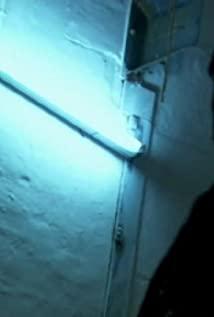This is a simple question, but there is no simple answer. We should forgive him, but we may not be able to do it; even if we can forgive him, we may not be able to accept him. For a person who makes mistakes, God not only tests him alone, but also tests each of us.
"Undercurrent" is a Norwegian independent film produced in 2009. This film discusses the meaning of "admitting and forgiving". Although the theme is not new, it is the most wide-ranging, deep-rooted film of its kind. A work of thickness. The film not only explores the mood of the offender and the victim, but also discusses the need for confession and forgiveness. It also looks at forgiveness and acceptance from multiple perspectives such as "men and women", "clerics and the general public", and "criminals and ordinary people". , And analyzed the three different levels of mental states of admitting mistakes, forgiving and continuing life.
Thomas is a young man who made mistakes. He and his friends kidnapped a young boy and eventually caused the boy to die accidentally. Thomas was imprisoned for the crime and performed well during his sentence. After being released from prison on parole, Thomas was accepted by a church and was responsible for playing the pipe organ. The sound of the piano was melodious and magnificent, and people couldn't help crying.
Tom's gentle and simple manner quickly captured the heart of Anna, the priestess of the church. However, the mother of the murdered boy accidentally saw Tom playing the organ, and all the grief swept through again. The little boy's mother began to follow Tom silently, to prevent Tom from hurting other people again, especially the youngest son of the female priest.
Inmates
When Tom was about to be released from prison, the inmates beat him severely. For those who kill children, even inmates who are also criminals find it hard to forgive.
Deacon of the church
When Tom came to the church for an interview, the first reaction of the deacon was to refuse. However, after hearing the sound of Tom’s playing piano, he decided to give Tom a chance. After all, such a moving piano sound should come from the hands of a pure-hearted person.
Church priest
The church pastor Anna is a young woman who has had absurd years before. After giving birth out of wedlock, fortunately, she has the understanding and tolerance of the church deacon, so she was able to come to the church as a pastor. Anna is a very kind-hearted person. When a bee is trapped in the house, she will try to open the window to let it fly out. When a homeless man is injured, she will give him an injection. Regarding Tom’s arrival, Anna felt that it was God’s grace that brought moving music to the church and possible support for herself and her children. Under the deacon’s deliberate concealment, Anna did not know Tom’s past.
Victim's mother The
victim's mother often goes to the coffee shop to buy hot cocoa. At this time, she will leave the child in the stroller outside the store. On this day, the mother accidentally spilled hot cocoa on the clothes, so she went to the bathroom to clean up the stains on the clothes. Unexpectedly, the child and the stroller disappeared in a blink of an eye. Although Thomas and his accomplices were quickly arrested, the child's body was never found. The victim’s mother can only learn from her confession that her child fell into the river and was washed away by the river. Despite her grief, the mother cheered up and continued her future life. She served as a teacher in a primary school and took good care of a pair of adopted daughters until she was taking the students to the church for teaching observation and seeing Tom playing the piano.
Father of the
victim After the death of his son, the father of the victim actively advocated the adoption of two little girls in order to cheer up his wife, and family life was indeed continued. However, a few weeks ago, he received a notification letter informing Tom that he was about to be released from prison. The husband concealed the news from his wife and fabricated the excuse of changing jobs, preparing to immigrate to Denmark with his family. What my father didn't expect was that his wife still met Tom and followed him.
Thomas
Thomas’ childhood was not happy, which led to his absurd and chaotic teenage years, and therefore made big mistakes. Thomas was not completely honest about his mistakes, and he dared not admit to a key crime. In court, Tom and his friends blamed each other, and the parents of the victim never knew what happened to his son in the end. The church deacon, the victim's father, and the victim's mother had all questioned Thomas about this, but Thomas always insisted that it was an accident. Even if he killed the child, he had already served his sentence for it. He did not owe anyone an apology.
Regarding confession,
Pastor Anna said: Some people never forgive, but God forgives everything. Forgiveness is not the most important part, confession is important. Only by accepting the fact that it is done, can life continue. People come to me to confess and tell me the sins they have committed and the sufferings they have suffered, which helps them to persevere in their lives.
The deacon of the church said: Go to the victim's mother, explain everything clearly, and give her a chance to forgive, so that she can start her life anew.
The victim’s husband said: Tell my wife that everything is your fault. No matter whether the stroller is outside the coffee shop or not, you will take the child away. You drowned the child and it has nothing to do with her. We don't want you to apologize, we just want you to admit it.
Thomas said: In front of death, there is no point in saying anything. If I killed the child, I have already served the sentence, I have paid the price, and I don’t need to be forgiven.
Whether it is God, the victim, or others, all hope that Thomas will admit his mistakes and face his crimes calmly. Only in this way can his own life and the life of the victim continue. Thomas was not indifferent to his mistakes, but he was deeply afraid of the consequences of confession. He was afraid of not being forgiven, afraid of rejection, and fear that life could not continue. Can admitting a mistake really get everything?
Regarding forgiveness and continuation of life
, the deacon of the church said that life will continue and everyone has a chance to be born again. Therefore, the deacon took Thomas in, concealed his past crimes, and asked the victim's mother for forgiveness for him, hoping that both Thomas and the victim's mother would be reborn.
The victim's mother said that I can no longer drink cocoa. Since the child disappeared, I felt sick as long as I smelled the cocoa. She could not forgive, because Thomas had never admitted that he had made a mistake. She wanted to let her life go on, but she couldn't help following Thomas. When she missed her daughter's concert because she followed Thomas and saw her crying tears, she was determined to let go of the past, gritted her teeth and walked on, but she couldn't do it.
The victim's father said that he was the one who made the mistake. Why did we have to leave? Why can he stand in the sun while we hide in fear? The victim's father was full of anger, but he concealed the news of Thomas' release from his wife from his wife. He arranged for the family to immigrate with a smile on his face. He suppressed the anger he couldn't vent and unscrupulously let his life go on. But his wife couldn't let it go, so he couldn't let it go.
Pastor Anna said that everything is arranged by God, even for sin, and it is not the wisdom shown in understanding God's words that moves people, but the courage shown in believing God's words. However, Anna overlooked one point. Before she became a clergyman, she was just a woman and a mother. Even after she became a clergyman, she was still a woman and a mother. As a pastor, Anna knows tolerance and courage, but as a woman and mother, can she be tolerant and courageous after knowing the truth?
Although the victim’s mother wanted to continue her life and muster the courage for her husband and daughters, she couldn’t help but continue to follow Tom. Responsibility and pain cannot be let go of a mother's hands. So she finally took the boy away when Thomas went to pick up Anna's son. Last time she failed to protect her son, this time she must protect the boy.
When Anna knew Thomas’ past and her son was missing, she collapsed. She frantically asked Thomas what happened to the child? When the victim's father saw his wife kidnapped their children, he became anxious. He immediately wanted to contact Anna to comfort an anxious mother. There are some roads, only if you have walked it yourself, you will know where to go.
When the victim’s mother drove Anna’s son with Thomas to the river where her son had disappeared, the mother asked Thomas what happened to his child, but Thomas still insisted that the child accidentally fell and died. At this time, Anna's son fled from the back seat, went down to the river, into the river, and was washed away by the rushing river water.
Thomas did not hesitate to swim into the river, holding the child and clinging to a branch, but they had to rely on the help of the victim's mother to get out of the river. Finally, all three of them went up to the river bank safely. When Thomas watched the victim's mother holding the boy tightly, he finally cried and said his fault. The boy recognized Thomas and ran away to the river when he was arguing with his friends. As a result, the child stumbled and fell and broke his head. Thomas thought the child was dead, so he hugged the child into the river, but the child opened his eyes and looked straight at him. For some reason, he still let the child float away. To this day, he can't face his behavior at the time. And being afraid made him unable to admit all this.
When driving back, the victim's mother reached out to Thomas. She finally forgave Thomas, not only because he confessed his mistake and gave her a chance to forgive, but also because she made the same mistake and made Anna's child go through the same ordeal as her own son. People make mistakes, sometimes it has nothing to do with kindness or not, things just make mistakes. Until this moment, the victim's mother was finally able to forgive and let her life go on without worry, while the husband and children were waiting for her at the door.
Thomas took the boy back to Anna, confessed what he had done back then, and explained that he had tried to tell his past. Finally, he asked Anna, didn't you say that God arranged everything, including sin? Anna remained silent, letting Thomas turn around and leave lonely.
Should we forgive Thomas and accept him? It is difficult for us to give a simple answer, but this is not because of cruelty, but because of compassion, because we know that everyone has a fragile heart and is worthy of sympathy and understanding, including the offender, the victim, and them. The people around.
Mirror deduction and non-linear narrative
"Undercurrent" adopts a non-linear narrative method in the narrative technique, dividing the whole film into three parts. The first part starts from Tom's release from prison until the disappearance of Anna's child, with Thomas as the main body of the story. The second part starts with the victim’s mother entering the coffee shop and losing her son until Anna’s child is taken away. The victim’s mother is the main part of the story. The third part is from when Anna's child is taken away to when the child is sent back to Anna, the victim's mother gets the salvation of the soul, and Thomas departs sadly.
In the first two parts, the fragment of the premise of the story "Thomas abducted and killed the victim's mother's son" was interspersed in the two stories in a reversed manner. This approach would have allowed these two parts to become separate paragraphs and become the long foreshadowing of the third part of the film. However, the director Eric Poipet adopted a brilliant method of tracking Thomas through the "victim's mother". This action, through the same scene but different perspectives, presents the world seen from the standpoint of Thomas and the world seen from the standpoint of the victim’s mother. The same world becomes the mirror image of the two sides, highlighting the “truth” It depends on the fact that you are standing.
In the first part, the world seen from Thomas’ point of view is that his life after his release from prison was disintegrated due to the stalking and harassment of the victim’s mother. It was that he could not get peace after paying the price for the mistakes he made. unfair. In the second part, the world seen from the perspective of the victim’s mother is that he has never been redeemed after losing his son. It is the unfairness of Thomas playing the organ peacefully in the church. In the world that one sees, oneself is the victim, but in the world that the other party sees, oneself is the perpetrator. And this is what the Bible mentions, everyone is a sinner, and only innocent people have the power to condemn others.
Throughout the film, water, the boy’s striped shirt, and
These symbolic things and the pastor Anna mentioned that trust in God is better than understanding of God. In fact, they quote the story of Jesus walking on the sea in Chapter 14 of the Gospel of Matthew, emphasizing the courage to trust. If everything has a reason for existence, including sin, if sin and suffering are a kind of trial for people, to realize the waves that arise in life, then as long as you hold firm faith, you can be brave forward. But if the heart is fragile and eroded by sin and pain, then it will not be able to go through the suffering of destroying life, and it will inevitably suffer the fate of being overwhelmed by sorrow and fear.
Although "Undercurrent of Mind" quotes biblical allusions, brings the perspective of "God's arrangement for sin" into the film, and also sets clergy and church as role scenes, but the film’s religious color is not particularly strong. In particular, the contradiction in the personality of the pastor Anna weakens the film's blind support for religion. The narrative methods and perspectives of the characters in the film are full of complexity, but the director uses symmetrical techniques and repeated elements to reduce the complexity, and uses clear narrative lines and orderly arrangement of characters to gather the main thrust of the story. From the attitude changes before and after the pastor Anna, one can see the challenges of attitudes and beliefs; from the victim’s understanding of forgiveness and continuing life, one can see the choices of men and women in dealing with pain; from Thomas and the victim’s mother In the see-saw between, we can see the need for confession and forgiveness, the relativity between the offender and the victim, and the meaning of forgiveness by comparing one's heart to one's heart. The more we understand the world, the less we understand the world. In the end, the only thing that supports us to move forward may only be simple belief.
View more about Troubled Water reviews











